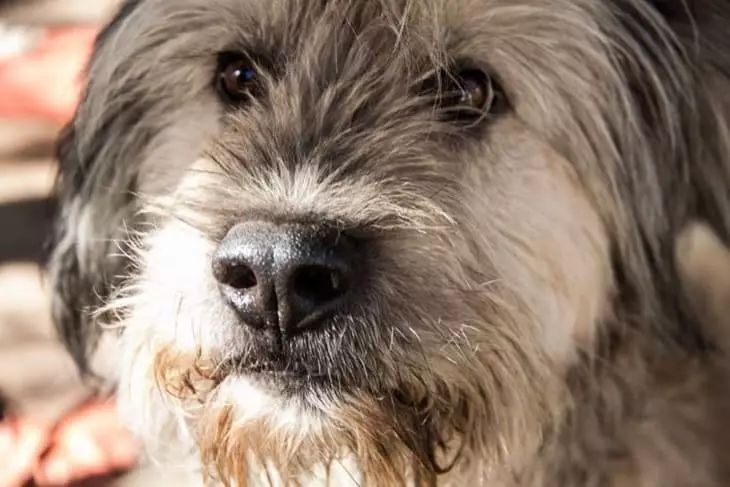What to do if your dog drinks little water: working methods
If a dog refuses to drink water or perhaps does not drink enough fluids, it can cause quite a bit of concern for its owner.
After all, water is a fundamental element of life and is absolutely necessary for a dog to maintain a healthy body.
If your furry friend is not getting enough fluids on a daily basis, it can eventually lead to dehydration and eventually lead to the development of some serious pathologies.
According to statistics, a healthy dog requires about 20-70 ml of fluid per kilogram of its weight daily.
However, this average depends on many factors, such as the size of the dog, its activity level, lifestyle, and even weather conditions.

The amount of daily fluid consumed is also affected by the pet's diet. If it is based on home-cooked food, it can get moisture from broths, meat, cereals and other sources.
Conversely, if your dog's diet is based on dry food, he will not be able to get the liquid from the food.
This is due to the fact that dry food is produced in such a way that the moisture content in the final product does not exceed 10%.
Wet foods, on the other hand, are produced in the form of chunks or meatballs in a sauce or jelly, resulting in a canned product that can have a moisture content of up to 85%.
There are various reasons why a dog may refuse water.
From the quality of the water to the type of bowl it is in. For example, if the water is left in the bowl for too long, the dog may refuse to drink it.
Additionally, if the bowl hasn't been washed for a long time, an unpleasant slimy layer may form on it, which will change the taste of the liquid and make it less attractive to your pet.
In addition, plastic bowls can give the water an unpleasant taste over time. Therefore, it is better to buy metal or ceramic dishes.
Sometimes dogs can find another source of moisture when their owners aren't looking. For example, a house dog might drink from the toilet, while a stray dog might drink from a puddle.
It is important to keep these things in mind and to closely monitor your pet's behavior.
Water temperature is another factor to consider. The liquid should be cool, but not ice-cold or hot. Ice-cold water can be harmful to your dog’s teeth and stomach, and hot water can cause a burn to the mucous membrane.
In some cases, a dog may refuse water due to pregnancy or aging.
As an animal ages, its metabolism slows down, which changes its eating and drinking habits. Older pets tend to drink less than younger ones because they are less physically active.
Your pet's activity level can also play a role in his drinking habits.
If a dog is relatively sedentary and does not expend much energy, its body will not expend as much water, which will result in less thirst.
However, more play and walking can increase your dog's activity and thirst.
Oral trauma can also cause pain when drinking, leading to simultaneous refusal of water and food, even if the animal is hungry and thirsty.
In addition, refusal to drink water, lethargy, loss of appetite are symptoms of many diseases. If you suspect that your pet is sick, you should immediately contact a veterinarian.
In the postoperative period, the pet's drinking regime may change due to the general weakness of the body.
However, once rehabilitation is complete, the dog will usually drink adequate amounts of fluid again.
What steps should you take if your dog refuses to drink water?
First of all, make sure the water is cool, not hot or ice-cold, and keep the bowl in a convenient location out of direct sunlight.
Dogs can be picky about water, so it's important to change it several times a day and keep the bowl clean to prevent mucus build-up.
If your dog refuses to drink from a plastic bowl, try switching to a metal or ceramic one.
Physical activity is also important to encourage your dog to drink more water. Regular walks, playtime, and running can increase your pet's thirst.
If your dog is not moving much, it may not be drinking as much water as it should. So it is important to keep it active.
It's also a good idea to establish a regular feeding schedule. Feeding your pet on a schedule two or three times a day can help prevent him from confusing thirst with hunger.
If your dog still refuses to drink enough water, consider changing his diet to include more fluids. Homemade food can provide extra moisture from foods such as broth, meat, or porridge.
For dogs on dry food, consider adding wet canned food at least once a day to increase fluid intake.
If your dog does not drink at all, you may need to switch entirely to wet food that is balanced in vitamins and nutrients.
If none of these methods help, or you notice other symptoms such as lethargy or decreased appetite, it is important to seek veterinary attention.
Refusal to drink water can be a symptom of many different medical conditions, and it is important to rule out any underlying health issues that may be affecting your pet.
